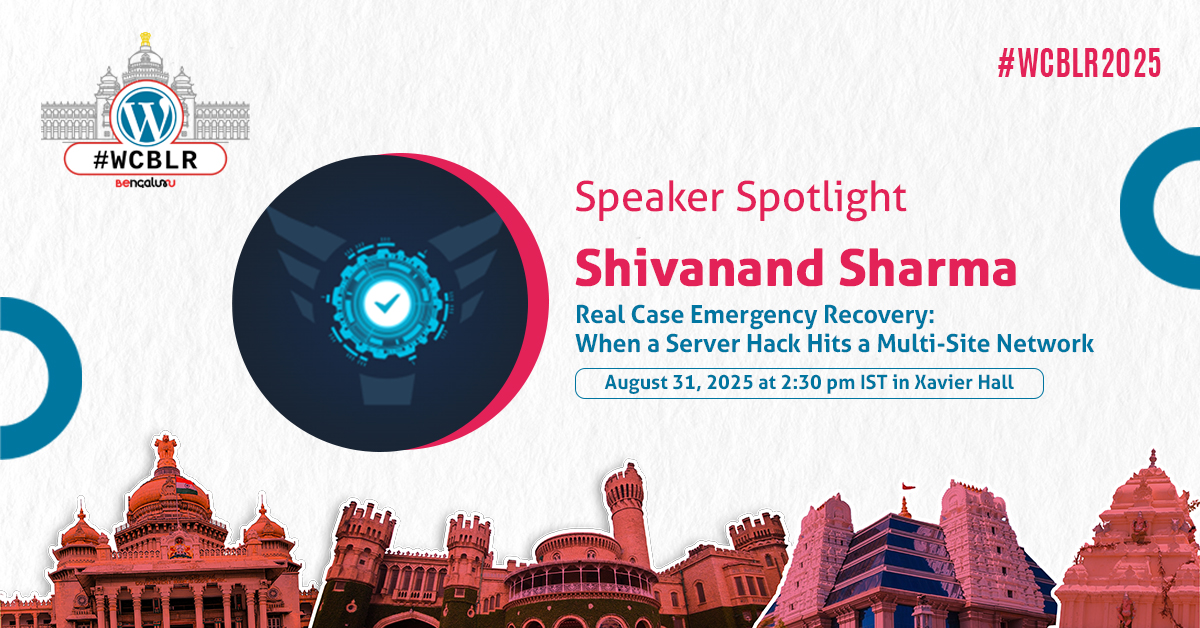Introducing our next Speaker – Shivanand Sharma
Meet Shivanand, the co-founder of Malcure, a web-security micro agency. With an experience in the tech industry spanning over two decades, he has been actively involved in IT since 2002 and in web security since 2017. Shivanand’s journey began with providing enterprise helpdesk support for consumer systems, gradually transitioning to IT enterprise support and systems provisioning for Windows and Linux servers while contributing to open-source software development on the side.
Throughout his career, Shivanand has had the privilege of working with various technologies to make the best of WordPress leveraging the likes of Nginx, ModSecurity, Linux, reverse-proxies, on-the-fly asset optimization like Google’s PageSpeed Module.
Hailing from New Delhi, Shivanand not only thrives in the world of technology but also possesses a deep love for music. When he’s not immersed in the digital realm, you can find him playing the flute, drawing inspiration from the cultural heritage of his hometown, Gwalior.
Known for his reserved demeanour, Shivanand prefers to let his work speak for itself. However, when it comes to sharing knowledge and insights, he transforms into an engaging speaker. With genuine enthusiasm, he aims to inspire and educate the WordCamp audience, fostering a collaborative and supportive tech community.
Session Name
Real Case Emergency Recovery: When a Server Hack Hits a Multi‑Site Network
Workshop Description
In this real-world, high-stakes case study session, you’ll witness firsthand how we managed the complex triage and recovery of a mass virtual-host server compromise.
When a server hosting hundreds of websites suffers a security breach, the consequences can be catastrophic, affecting countless businesses and users simultaneously. Downtime, data loss, SEO damage, and loss of customer trust are just a few of the immediate impacts.
This session dives deep into:
— Immediate steps for containment and damage assessment.
— Prioritizing remediation across multiple affected websites.
— Strategies for identifying the initial attack vector.
— Real-time decision-making under pressure.
— Communication strategies for stakeholders during active incident response.
— Tools and techniques for efficiently removing malware and restoring clean services at scale.
— Post-incident actions to harden infrastructure and prevent future breaches.
You’ll leave this session with the insights and strategies necessary to swiftly respond to security incidents, strengthen your defenses, and maintain business continuity under challenging circumstances.

